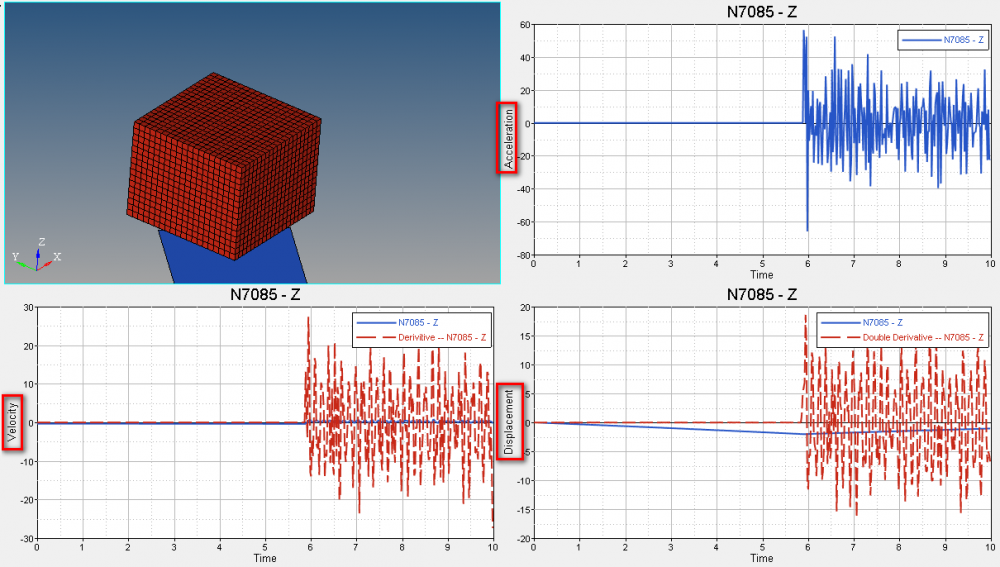Hi all,
Based on a drop test simulation, I think we can get one node acceleration by using three ways.
First, get acceleration result directly by using Build Plot about Acceleration.
Second, get velocity result directly by using Build Plot about Velocity, and then do one derivative to get acceleration.
Third, get displacement result directly by using Build Plot about Displacement, and then do double derivative to get acceleration.
From my simple test example, I found the acceleration results with the same node by using the above three methods were very different (the z direction acceleration result of node 7085 listed below method 1: -66~56, method 2: -27~27, method 3: -16~19). The result was figured below.
So my doubt is why so different acceleration results were gotten by using these three methods? Which method result is correct and can be compared with experiment testing acceleration result by using accelerator in experiment?
<?xml version="1.0" encoding="UTF-8"?>
Roy
Unable to find an attachment - read this blog